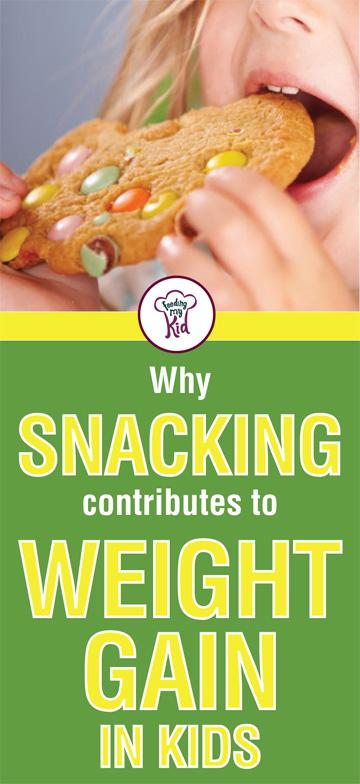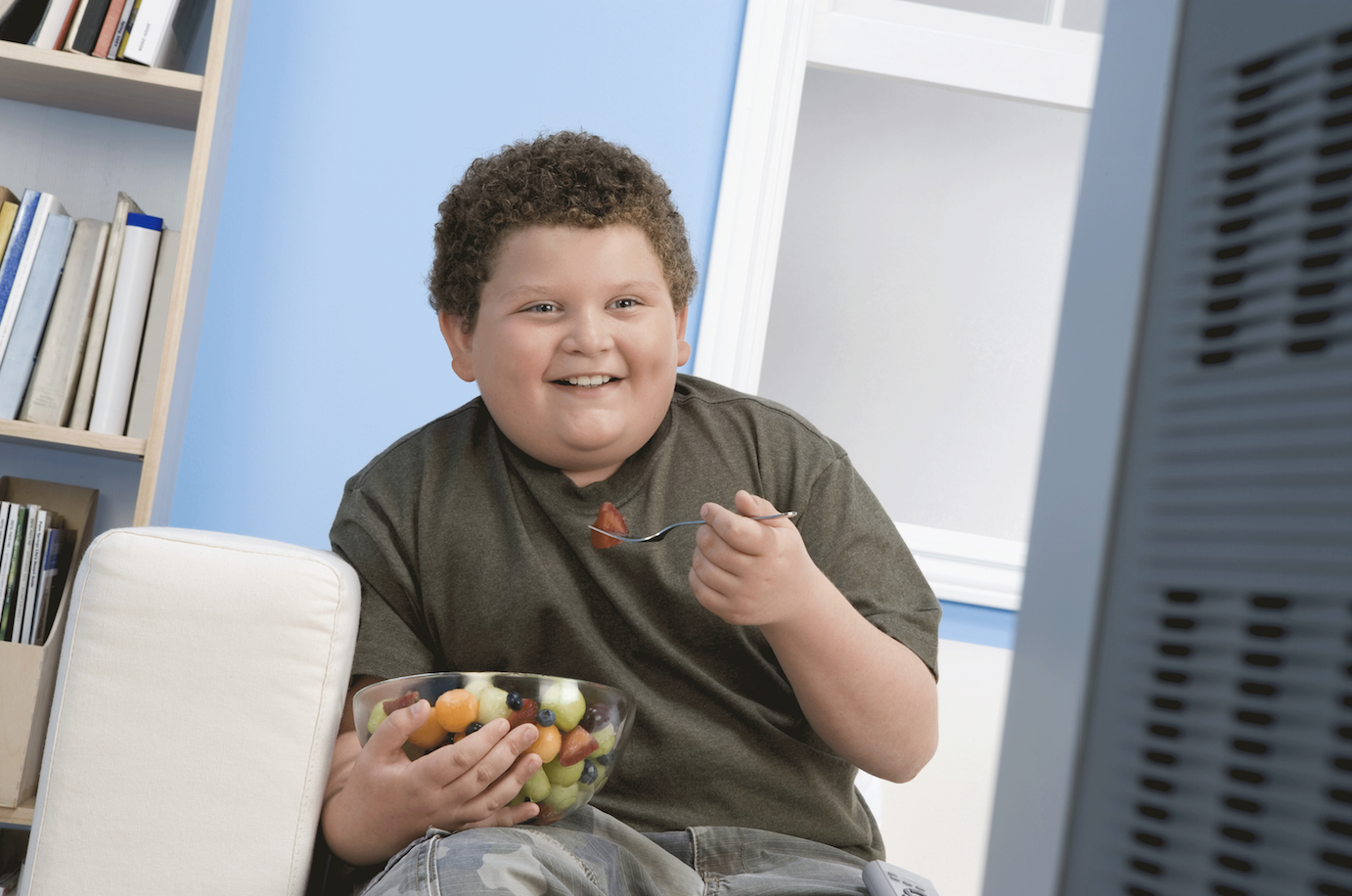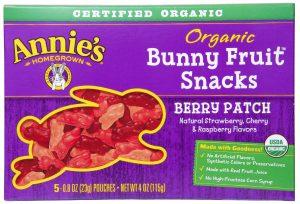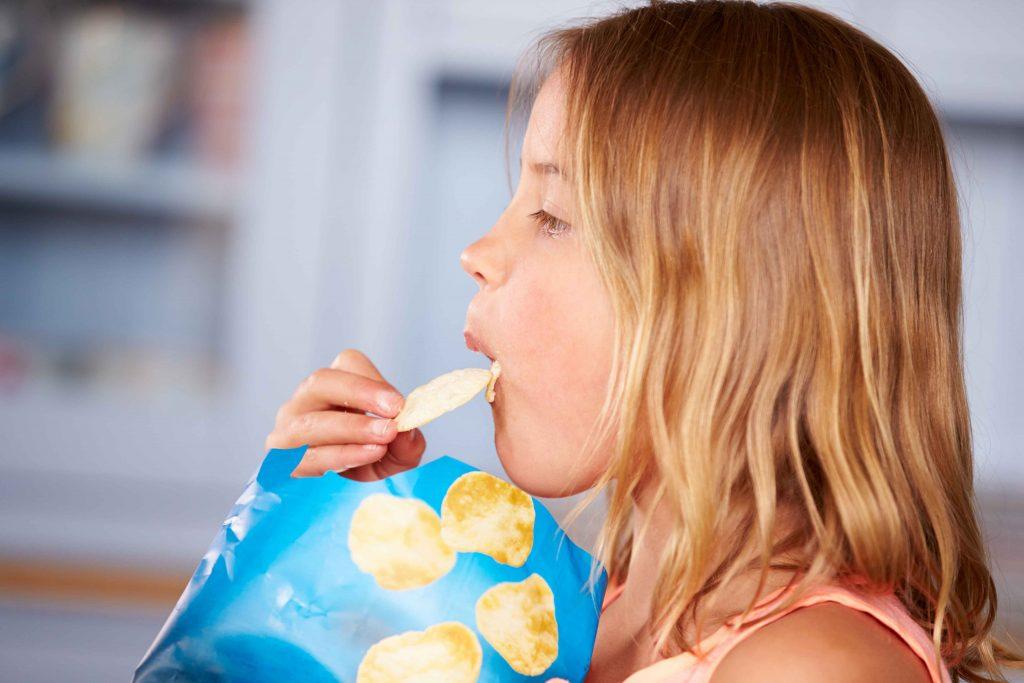 In this article, you’ll discover the most useful methods to feed your child the right kind of snacks that won’t spoil dinner!
In this article, you’ll discover the most useful methods to feed your child the right kind of snacks that won’t spoil dinner!
Snacks are an important part of your child’s diet. That’s why you must make sure your kids are receiving the best types of foods to help stabilize their moods, improve their concentration and not cause weight gain or spoil their next meal.
Since kids have smaller stomachs and high energy needs, they probably can’t go between meals without a snack. Kids need the extra fuel to be able to go, go and go!
Nutritious Snacks: If Used Right, Snacking Adds Nutrients
Try to use snack time as another way to get nutrients in your child and alleviate the pressure at dinner. You see, if your child’s snacks are nutritious, it can take the pressure off your child having to eat his or her vegetables for dinner; you won’t feel stressed as a parent, since you know your child has already had healthy food throughout the day.
When my twins eat healthy snacks throughout the day, I’m not as concerned with what they eat for dinner. So if you can get your kids to eat some healthy snacks, like I get mine, then you’re that much closer to having them eat a well balanced diet. And you won’t be so stressed out at mealtimes.
Check out our other articles in our Childhood Nutrition Series:
- Why You Shouldn’t Put Your Child on a Diet. Do These 9 Things Instead.
- How to Best Talk to Your Kids About Their Weight!
- How Juice Went From A Health Food to Junk Food
Snacking is a huge reason obesity in children is increasing at an alarming rate.
 However, over snacking is a leading contributor to weight related issues. In fact, snacking has a large role in why one-third of the children in the United States are overweight. The foods pushed by food manufactures are generally not healthy and are high in added sugars, salt and fats.
However, over snacking is a leading contributor to weight related issues. In fact, snacking has a large role in why one-third of the children in the United States are overweight. The foods pushed by food manufactures are generally not healthy and are high in added sugars, salt and fats.
Because food manufactures have found this combination often leads to the “bliss point” in food. The “bliss point” is the optimal amount of sugar, fat and other factors that contribute to a food tasting really good; this is without factoring in health whatsoever. The brain and taste buds quickly start to favor these foods and then demand them!
Because of these tasty foods, kids are consuming and over-consuming more and more foods. A recent study has found “that high-calorie snacking is proving to be a major cause of childhood obesity. Chips, candy and other snack foods account for up to 27% of the daily caloric intake for children, ages 2 to 18,” according to findings by researchers at the University of North Carolina at Chapel Hill.
“Childhood obesity affects an enormous and growing number of families around the world, but the vast majority of these cases are preventable, and can still be reversed,” says Sonia Caprio, MD from Yale Medical Group about the study. She goes on to say, “Understanding how children become obese or overweight in the first place is an important step toward breaking the cycle.”
Now that we see that snack foods are a contributing factor in child-weight-gain, we can start making the effort to get our kids eating right again.
The Foods Kids Eat
 The food industry has grown into a huge money-making machine by marketing to children. Kids are being targeted with elaborate ads on TV, the Internet and with clever logos.
The food industry has grown into a huge money-making machine by marketing to children. Kids are being targeted with elaborate ads on TV, the Internet and with clever logos.
According to Juliet Schor, children can recognize logos by the age of 18 months; these children not only grow up to prefer these brands, but grow up to believe the brands correspond to their own personalities (Schor, 2007). By the age of 3 (yes 3 years old!) children already feel social pressure to use certain brands.
Not only is branding clever, but the use of mascots for marketing helps push food products, as well. You have Tony the Tiger, Toucan Sam and Elsa all hawking clothing, toys and treats. You have Ronald MacDonald and Chucky Cheese who make it fun to serve unhealthy food. Sesame Street characters are on chicken nuggets and sugar-laden yogurts. And, let’s not forget the Minions, who are on hundreds of different kinds of candies and sweets.
These powerful marketing figures drive sales and get kids to consume nutritionally poor quality foods. Ultimately, these food manufactures are manipulating children into demanding parents to buy these foods. These manipulative advertisements are all over the place but are extremely prevalent on television.
And since children watch a lot of television, they watch a lot of advertisements. In a given year, kids watch approximately 5,500 commercials (1). A recent study shows that kids who watch more TV are more likely to go to fast food restaurants (2).
How does a parent even stand a chance in this marketing nation?
Snacking Out of Boredom 
Children are also learning a horrible habit of snacking when they are not hungry. They are grazing on foods because they are bored and like the taste. Kids are learning to snack out of boredom; this is one of the worst things we can teach our children. It packs on countless extra pounds and teaches children not to listen to their tummy when they are full.
Snacking to Keep Kids Busy
Filling up kids with unhealthy snacks has gotten out of hand, too. Believe me, I get it! A lot of parenting has to do with surviving the day.
 Some days we just need five minutes (just five little minutes) of piece and quiet to settle in. Sometimes our kids just won’t let up so we resort to feeding them unhealthy, processed foods to quiet them down. Nothing is more powerful to get my twins to chill out than a bag of pretzels. I understand, we need those moments of silence! I get it!
Some days we just need five minutes (just five little minutes) of piece and quiet to settle in. Sometimes our kids just won’t let up so we resort to feeding them unhealthy, processed foods to quiet them down. Nothing is more powerful to get my twins to chill out than a bag of pretzels. I understand, we need those moments of silence! I get it!
But think of it this way: If you are having a lot of these types of moments, you’ve got to consider the long game. What are you teaching your kids if you give them those chips? Are your kids getting used to this type of reward for bad behavior and acting out even more to get more snacks?
Can you use this as an opportunity to give your child a hardboiled egg, zucchini fries or sliced tomatoes? If your kids are addicted to Gold fish and pretzels that last comment probably made you gasp in disbelief that your child would eat a tomato for a snack. It’s a process, but habits can be unlearned.
The Energy Kids Lose
Kids are missing out on eating more nutritionally dense foods when they eat processed, unhealthy snacks. Children are not getting the nutrients they need. Not only that! These snacks are generally high in empty calories and displacing real foods. If kids are taking in too many empty calories, the calories will be stored as fat.
On average, kids eat about 3 snacks a day. Out of these snacks, they receive about 600 of their calories a day. That’s 600 extra calories kids are consuming a day (4).
If you factor in the daily consumption of calories kids have from snacks—600—into a year, that’s 219,000 calories kids are receiving from snacks.
Now, given that on average 3,500 calories make a pound—that’s approximately 62 pounds worth of calories kids are adding to their diet each year. The unfortunate part of it is, is that these calories supply very low amounts of nutrients and are essentially empty.
 So as you can see, this extra eating is not only piling on the calories, it’s also limiting children from eating during mealtime foods that are otherwise more worthwhile. If kids fill up on empty calories during snack time, they are less likely to eat enough during dinnertime.
So as you can see, this extra eating is not only piling on the calories, it’s also limiting children from eating during mealtime foods that are otherwise more worthwhile. If kids fill up on empty calories during snack time, they are less likely to eat enough during dinnertime.
Snacks Can be Sabotaging Your Mealtimes
Snacks, like pretzels and chips, can be filling. In order to encourage children to try new foods and be open to eat the meals you create for dinner, it’s important kids feel a sense of hunger before a meal. Find out why it’s important for kids to get hungry before a meal.
What is happening is that kids are filling up on these empty calorie snacks and then not eating dinner. An hour after dinner is over, the child then says he’s hungry again. Sound familiar? He’s probably asking for more empty calorie snacks, like Goldfish or pretzels. And the vicious cycle continues.
Sadly, while he did eat something during snack time, it was devoid of any nutrients. The problem is, small bodies need nutrients in order to develop into big healthy bodies. I wish I could wave my magic wand and get rid of these types of foods! It’s virtually impossible not to overindulge on foods created to be deceptively tasty; vegetables just can’t compete with the “bliss point”.
How to Get Your Kids To Eat Better
There are a number of ways to get your children to stop snacking on foods that are not all around good for them. The best methods are at your discretion but as a parent these are possibly the easiest methods and the best way to get your kids back to the dinner table and eating good foods, once more. Share our methods in the comments below.
TV Watching
First, when kids are watching TV, be sure to explain to them what they are watching. If they see an advertisement about food ask them how it made them feel. Explain to them what it means and have a conversation with them about why these programs are catered towards them. This will create a better awareness for your child. This will help in steering your kid away from these foods.
You can also pick shows without commercials. I try to only let my twins watch shows on Netflix to avoid commercials all together. TV is a part of our lives, but we can’t have TV condition our children on what to eat.
Create Your Own Snack Time
Create pre-scheduled snack time for your kids so they don’t eat just before dinner. Creating a set time every day will help keep your child on a proper schedule and will also be sure to prevent his blood sugar from dipping too low. This will prevent him from over-indulging.
For example: give him fruit, like an apple or some peanut butter on a banana around two hours before the next big meal. If you want to go healthier, try almond butter.
Processed Snacks 
A great method in reducing the amount kids will eat from snacks is to have prepared snacks already sorted and placed in pre-arranged dishes or Dixie cups. This way, you know how much your child is eating and what they are eating.
Divide healthier snacks such as nuts and seeds and cut up vegetables into individual serving sizes and put them into an easily accessible place in the refrigerator or pantry. If you cut up cucumbers or carrot sticks in advance, your child is more likely to grab these “pre-made” snacks.
Keep unhealthier snacks in opaque containers out of reach in the pantry. Out of sight, out of mind. A better thought, don’t buy these types of snacks in the first place. The longer a person goes without eating these “bliss point” snacks the less a person will crave them.
Go Shopping
As Ellyn Satter says in her book Your Child’s Weight, you are in control of what you feed your child; your child is in control of how much they eat of it. This is the parent/child balance. So be sure to go shopping with your kids and pick out healthier snacking alternatives.
Going shopping with your kids will make them feel as though they have more control over the food they eat. Turn the packaging over and read labels. Help your child learn how to read labels and understand how much fat, sugar and salt are in the food. Plus, check out the ingredients to see how many additives are in the food, like food coloring, and how much actual nutrients are in the food, too.
Make a point to shop the perimeter of the store and avoid the “snack” aisles all together
Snacks Don’t Need to Be Processed Empty Calories
Snacks can be mini-meals and do not need to be snacks at all! Offer a few small pieces of chicken, tuna salad, vegetable casserole leftovers, etc. The list is endless! Snacks are just mini-meals for kids to help stabilize their blood sugar and mood before the next meal. Use snacks as another way to hit your child’s nutritional needs.
So you see, snacking doesn’t have to be all that bad. You just have to take control of what they eat and be sure to schedule snack time so they will be hungry just in time for dinner!

Additional Information and Resources
-
New York Times: The Right To Sell Kids Junk Food
-
Science Daily: Snacking contributes to fatty liver, abdominal obesity
-
New York Times: U.S. Children: Generation Snack
-
BBC News: Snacking clue to obesity epidemic
-
Your Child’s Weight: Helping without Harming: Birth through Adolescence. By Ellyn Satter. “Chapter 1” Madison, WI: Pg. 27. Print.
-
NPR: How The Food Industry Helps Engineer Our Cravings

